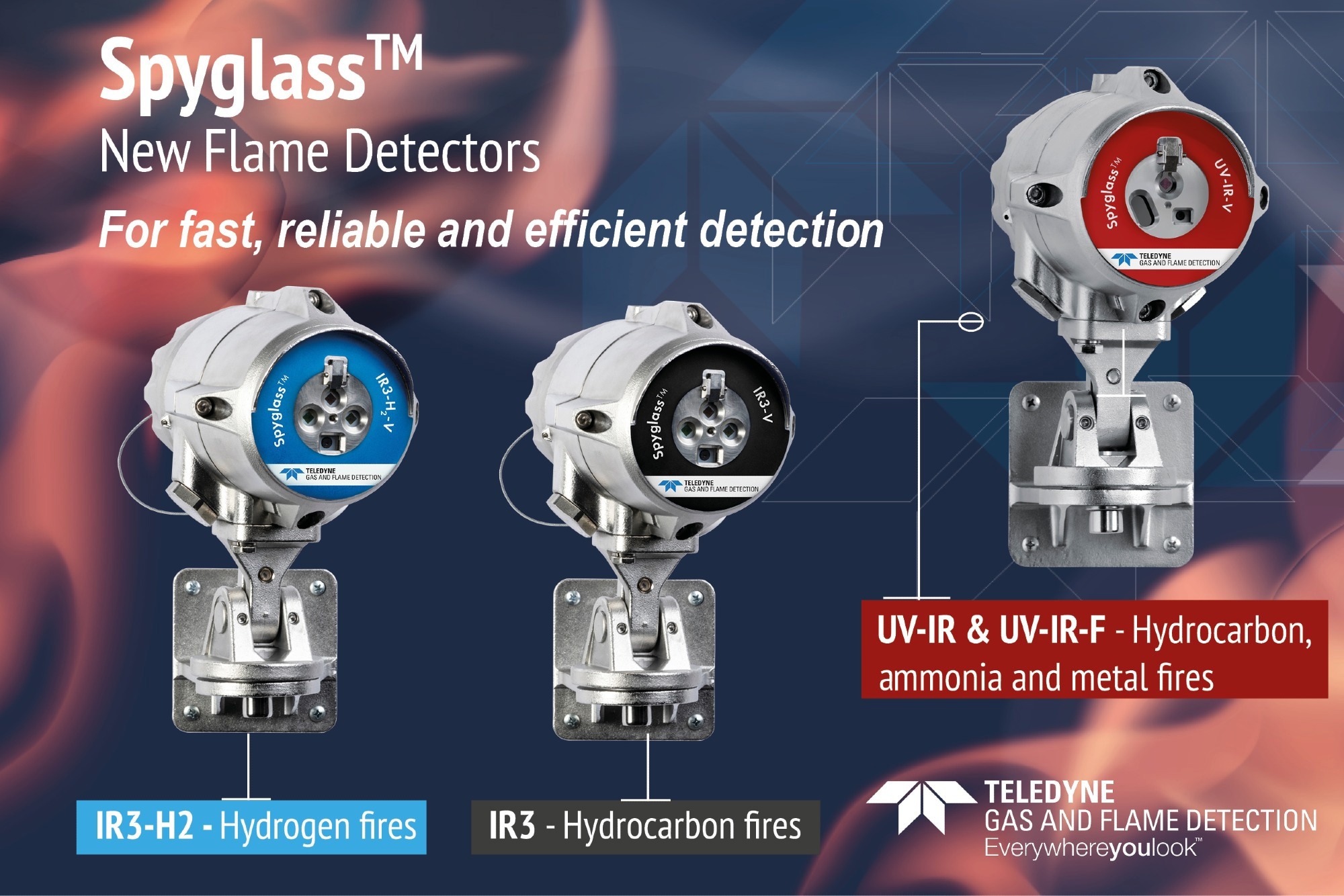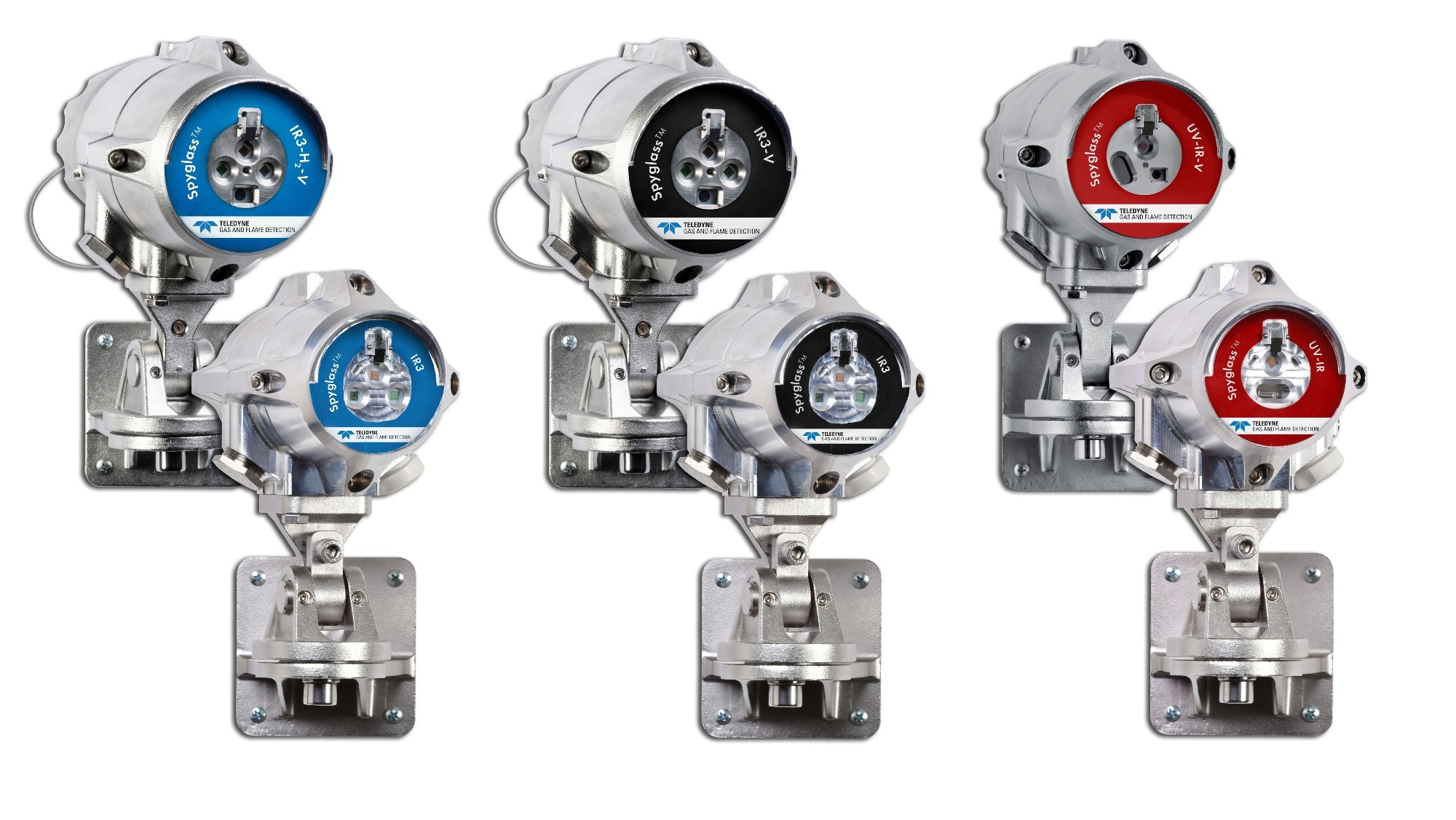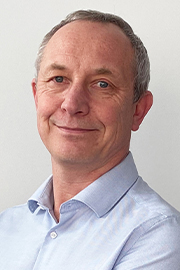Can you explain what the Spyglass system is?
The Spyglass series is a family of optical flame detectors, the safety device dedicated to detecting fires at the earliest stage possible. They are intended to be installed in industrial environments, many in hazardous areas such as the ATEX zone for Europe or IECEx for international approvals.
They are designed to be implemented in a wide range of applications and can even be used to tackle even more challenging applications such as offshore platforms, the petrochemical industry, wastewater storage sites, and battery energy storage solutions, which is a growing market.
Could you tell us more about how the Spyglass system is used?
Spyglass detectors are usually connected to a PLC or a fire and gas system through their analog output. It is zero to 20 milliAmps, and the fire and gas system will trigger an alarm, a safety mode, or an extraction system.
Another typical application is connecting the flame detector to the fire panel, and then we use the relays.
What was the inspiration behind Spyglass? How did it come to be developed?
There are two major qualities expected of flame detectors. Firstly, performance, in other words, how capable the flame detector is in detecting the fire at the early stage when the fire has not emitted much heat energy.
The focus has been on the sensor performance, which involved considerable work on the algorithm to enhance the speed response. The Spyglass family was the result of this work, and it has the best response time on the market.
There is also a special version of the spray application using thermal material, which is defined by the US standard or NFPA 33.
This version has a new, faster response to comply with this standard and opens the door for other applications like munition or sparks in a windmills application when there is a fast eruption of fire.
The second expected quality is reliability: the user must be sure that their optical flame detector only sounds an alarm in the case of a real fire. Achieving this quality required a huge amount of work on the algorithm to attain superior immunity against the false alarm, which could be caused by the sun, solar radiation reflection, lightning, or exhaust gases of engines and turbines.

Source: Teledyne Gas And Flame Detection
Could you tell us a bit more about the different products in the family?
We use two main technologies. One is UV-IR technology, which is the combination of an ultraviolet sensor and an infrared sensor. If both sensors provide the alarm information, the detector enters alarm status.
There is also a multi-infrared technology, triple IR, which involves three infrared sensors. One is designed to spot the fire, and the other two are there to identify the background. The algorithm calculates if there is a fire and provides the right answer.
What industries do you think stand to benefit the most from Spyglass?
There are two types of applications, the first being hydrocarbon fire applications. This can involve natural gas, gasoline, wood, alcohol, and everything combustible with hydrocarbon.
In this case, applications are offshore oil, offshore platform, FPSO, refinery, compression stations, turbine enclosures, loading racks, and aircraft hangars – anywhere where hydrocarbon is involved.
The second family of our flame range is dedicated to alternative energy for energy transition fire applications. This is focused on hydrogen, ammonia, or a mixture of fire with hydrogen and methane, CH4. The applications are H2 production, H2 transportation, and mobility.
What are the advantages of Spyglass compared to other flame detection systems?
In addition to what I have previously mentioned, the Spyglass family’s unique feature is its integrated high-definition video. The Spyglass is connected to a remote video system, which allows users to check if there is a fire or not and allows the first responder to be aware of the exact situation before entering a hazardous area or active expansion system.
The information is provided in real-time and with remote monitoring of unmanned locations. The detector captures the video one minute pre-event and three minutes post-event. This is an extremely important part of the post-fire analysis as it helps to understand the root cause. This enables our customers to understand what has happened, why, where, how, and how to manage this fire.
Additionally, the Spyglass has a specific camera for a hydrogen fire, as this type of fire is not visible to the human eye. This near-infrared camera offers a unique opportunity to see the hydrogen fire. This technology, paired with our video technology, means that our product stands out as unique in a crowded market.
With our triple IR and H2 technology, we have been able to increase performance by 50% and cut the response time in half.
This means that we are able to detect an earlier and smaller fire, leading to less damage and an easier fire to extinguish. From an economic point of view, this also means that a company can potentially reduce the number of flame detectors they need, as our technology is highly capable.
How easy is the fitting and operation of Spyglass systems?
Flame detectors, in general, are very easy to fit and operate. Regarding the operation itself, there is what we call the built-in test. The device can check if the glass optic has any dust or oil on its windows, meaning it can maintain its initial performance.
The detectors self-test every 15 minutes, increasing safety, reliability, and trust in the detection.
There is also an associated long test that simulates a fire and checks if the global safety loop is operating as it should. This includes the detector, the controller, the fire and gas system, and the alarms or safety action.
This long test tends to be carried out on an annual basis and is hazardous area certified, so it can be used anywhere.

Source: Teledyne Gas And Flame Detection
What global approvals has Spyglass received?
Spyglass is certified for hazardous areas in Europe with ATEX, internationally with the IECEx, in the US and Canada with FM, and in the UK with the UKEX.
We will soon obtain the INMETRO for Brazil because increasing offshore applications on the Brazil Atlantic Ocean also require marine approval.
The Spyglass is also SIL 2 certified and can be integrated into a safety loop.
Was there anything that surprised the team with regard to Spyglass, and did anything function beyond expectations?
The video aspect was initially created for post-event analysis. However, a lot of companies are requesting to have this video feature integrated into their device to allow them to monitor their processes from a centralized location somewhere in a country. For example, to have one control room in the UK for all LPG stations.
This is even more true when it comes to the detection of H2, as current CCTV systems cannot see the H2 fire. This was one of the most unexpected successes of the Spyglass.
What future improvements are on the horizon?
For me, the next step will be to progress to wireless and further enhance the system’s communication. It would also be highly beneficial to be able to locate the fire through the video itself.
We would also love to integrate new and emerging technologies into the device, such as thermal, optic, visual, and infrared.
Some of our competitors are experts in their field but only focus on flame detection. Here at Teledyne, we open up a much larger, much wiser spectrum of technology.
What are the main takeaways for our readers in terms of the Spyglass?
The key takeaways are the improved reliability and performance provided by the Spyglass family and the breakthrough technology of the embedded video for post-event analysis and real-time centralization, which is completely unique for customers.
In this market, reliability is a must, especially when discussing safety and human life. We also need to consider assets, which sometimes cost billions if we are talking about our FPSO. It must be reliable, and our system puts you one step closer to achieving this.
About Régis Prévost

Regis boasts 25 years of experience in the Fire & Gas detection sector, as well as a great expertise in engineering, and extensive knowledge of the major actors and applications of the Oil & Gas industry. His vision is always focused on security, and he works towards using new gas mapping tools and innovative detection technologies to find safe solutions for the industry and the field of new energies.

This information has been sourced, reviewed and adapted from materials provided by Teledyne Gas and Flame Detection.
For more information on this source, please visit Teledyne Gas and Flame Detection.
Disclaimer: The views expressed here are those of the interviewee and do not necessarily represent the views of AZoM.com Limited (T/A) AZoNetwork, the owner and operator of this website. This disclaimer forms part of the Terms and Conditions of use of this website.